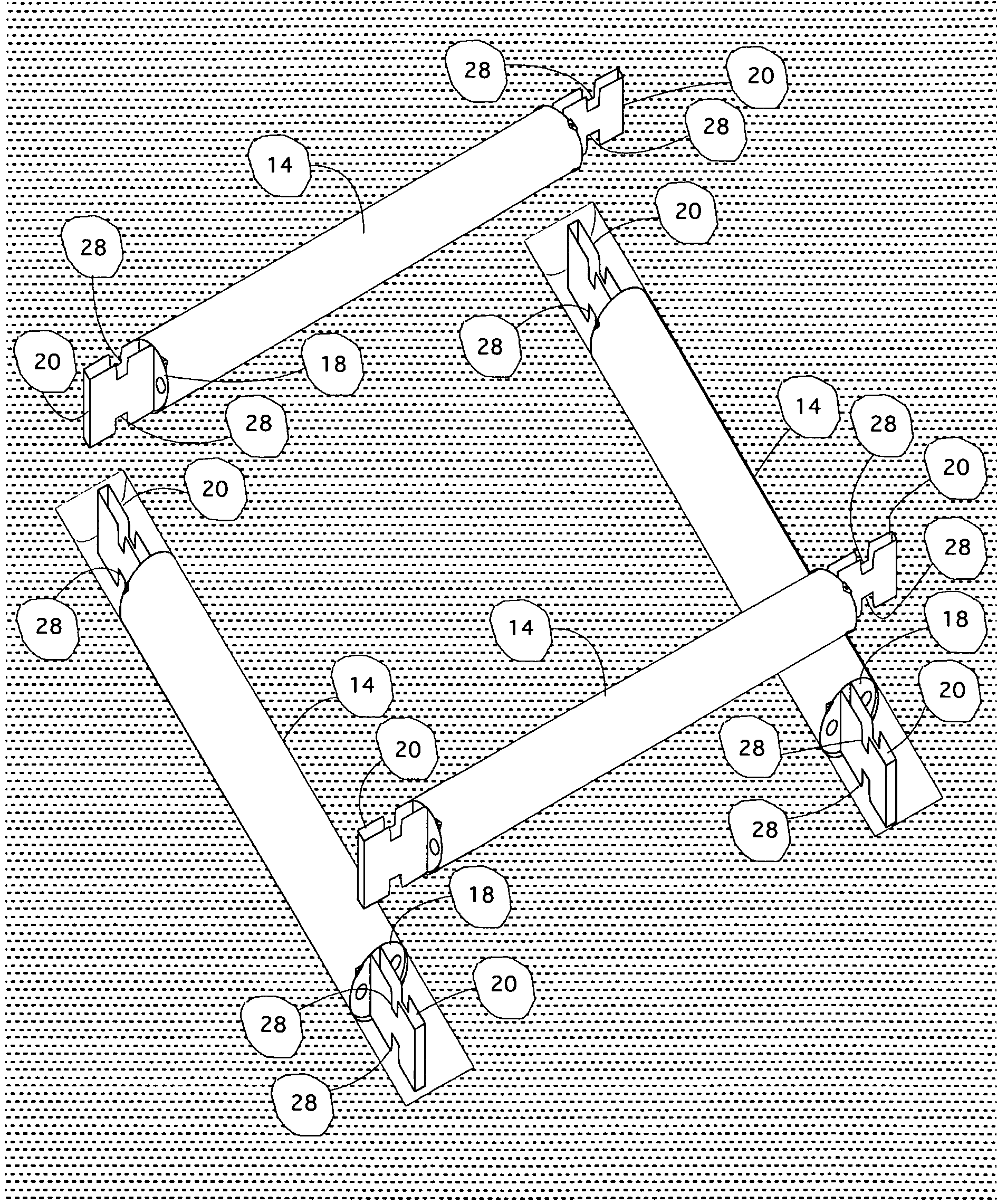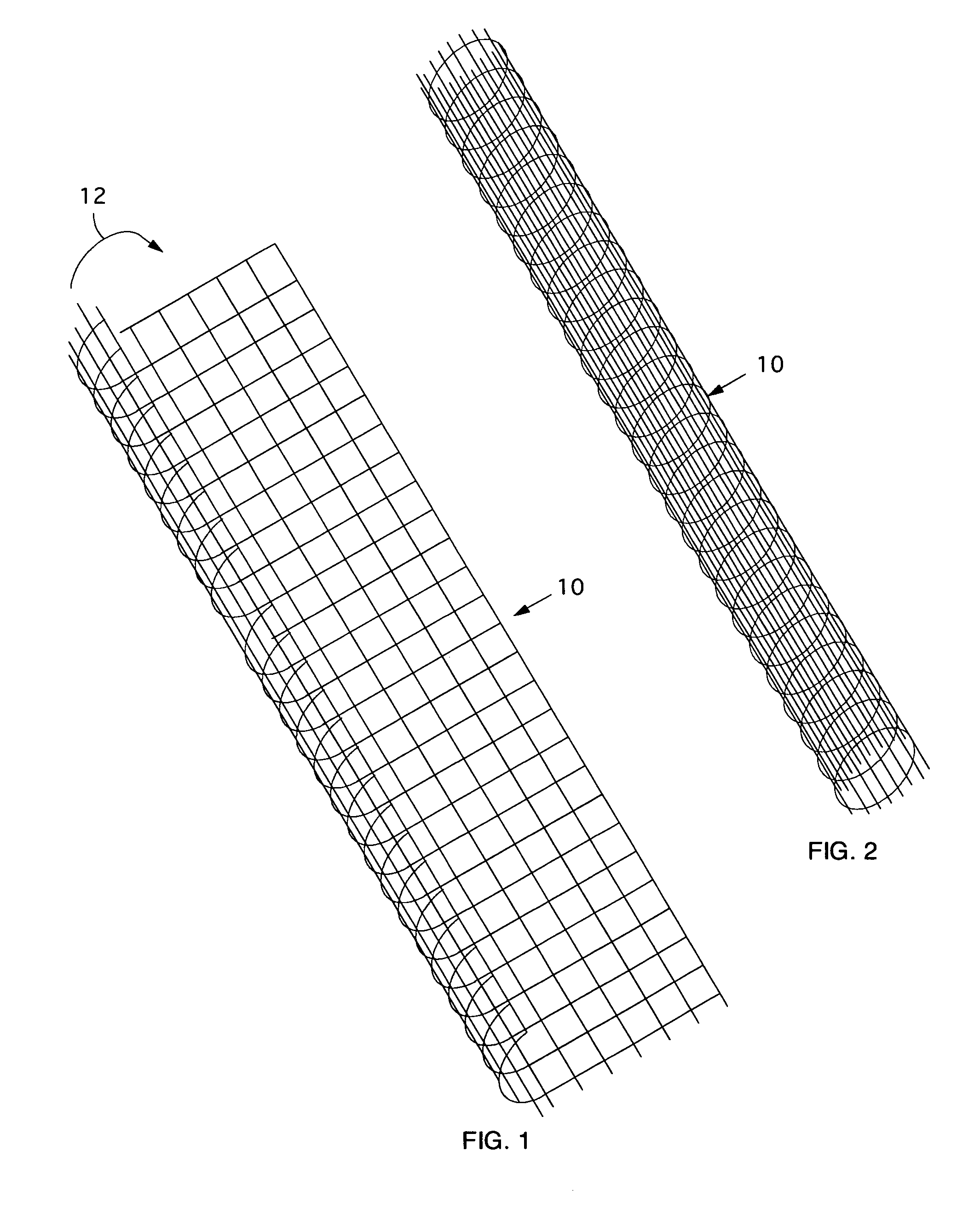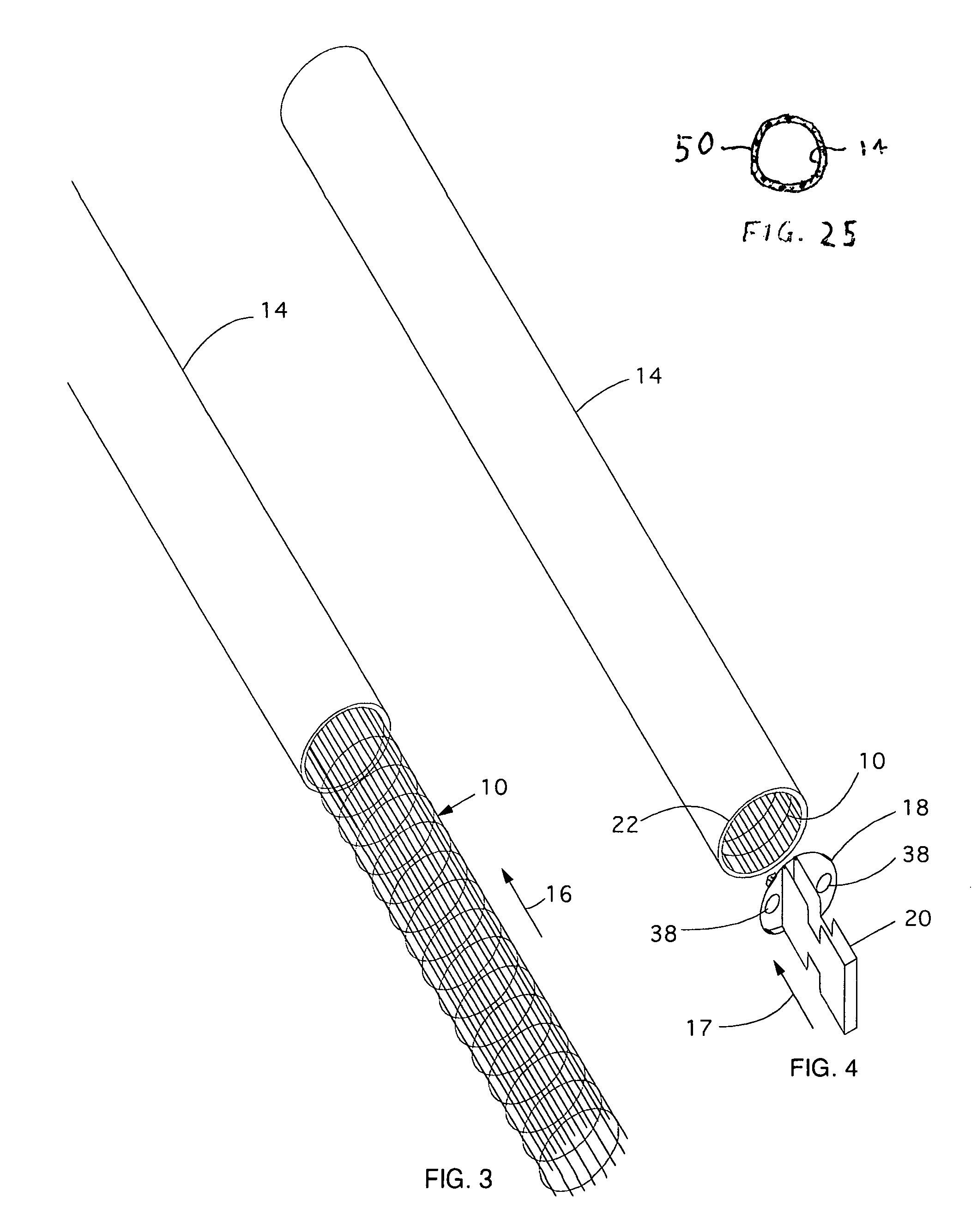Foundation for metalog buildings
a technology for building foundations and metalogs, applied in the field of building foundations, can solve the problems of reducing the cost of shipping and handling, reducing the uniformity of the logs, and reducing the involvement of logistics
- Summary
- Abstract
- Description
- Claims
- Application Information
AI Technical Summary
Benefits of technology
Problems solved by technology
Method used
Image
Examples
Embodiment Construction
[0036]Relatively tiny superstructures in accordance with the present invention are robust enough to obviate a cement slab or foundation platform. This can be of importance in remote areas where the mere fact of having to pour a cement slab for a small building could represent a major complication. That is also where the present invention outperforms conventional alternatives. In accordance with the invention, the concrete slab that is usually poured as a foundation for inexpensive superstructures in remote locations, or the basement that is rarely poured as a foundation for such superstructures, is replaced by the superstructure's lowest or foundation metalogs, which are protected in a novel way.
[0037]In one embodiment of the invention, each of these special metalogs has a reinforcing mesh inserted into its interior. The mesh is preferably made of a strong but inexpensive metal such as steel but is optionally made of aluminum or a strong plastic such as Kevlar. In principle, it can ...
PUM
 Login to View More
Login to View More Abstract
Description
Claims
Application Information
 Login to View More
Login to View More - R&D
- Intellectual Property
- Life Sciences
- Materials
- Tech Scout
- Unparalleled Data Quality
- Higher Quality Content
- 60% Fewer Hallucinations
Browse by: Latest US Patents, China's latest patents, Technical Efficacy Thesaurus, Application Domain, Technology Topic, Popular Technical Reports.
© 2025 PatSnap. All rights reserved.Legal|Privacy policy|Modern Slavery Act Transparency Statement|Sitemap|About US| Contact US: help@patsnap.com



